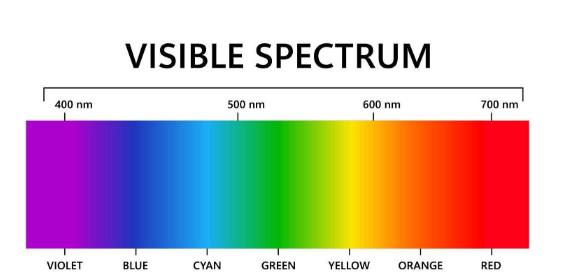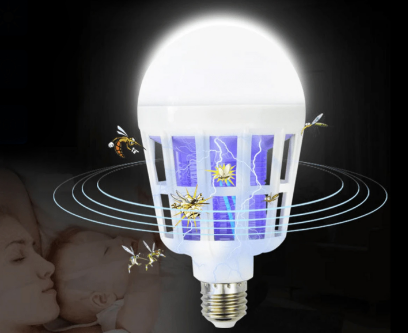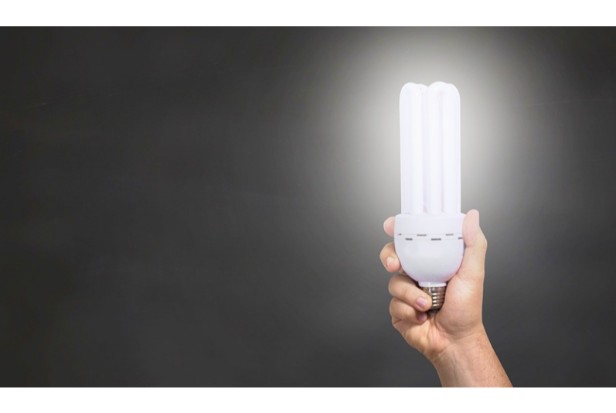In comparison to conventional incandescent or fluorescent lightbulbs, LED lighting has demonstrated its ability to save energy. But do LED lights draw or keep away bugs when used outdoors?
The presence of light attracts insects. At night, when the swarms are most visible, we can observe examples of this by looking up at streetlights.
You can select the best LED lights for your home by becoming more knowledgeable about the science involved.
Learn why bugs prefer light in the following paragraphs, along with some steps you can take to reduce the number of insects around your lights.
Why Are Bugs Attracted to Light in the First Place?
In the dark, bugs navigate using various lights, including the moon. They utilize outdoor lighting for many of the same purposes as people do, including to see where they are going and what they are doing.
Actually, the majority of bugs, if not all of them, would much rather just travel and navigate by the light of the moon. Bugs become perplexed about their travel patterns due to the abundance of lights in the streets, in people’s homes, and in other places they may be able to see. Since they mistake the man-made light for the moon, they inevitably turn toward these lights.
Additionally, especially during colder months, insects really enjoy the heat that light bulbs emit.
Bugs, on the other hand, are only drawn to lights that they can easily see. Otherwise, the light won’t resemble the moon at all. The bug won’t even notice a dimmer light, regardless of the type of light bulb you use.
Because they more closely resemble moonlight, bulbs that emit shorter wavelengths will draw more insects. These will typically be very cool white or even blue-tinted bulbs. Longer wavelengths, which are much more difficult for a bug to see, are emitted by bulbs with more yellow, orange, or red tints.
Do LED Lights Attract Bugs?
In a technical sense, LED lights do draw insects. However, considering what we just talked about, regardless of the type of bulb being used, any light that a bug might mistake for the moon will draw it.
In general, bugs are less drawn to LED lights because they are cooler than other types of lightbulbs (i.e., they don’t get as warm). But since many LEDs are quite bright and do emit the cool white, blue color that bugs adore, they are much more concerned with this aspect.
Only if the light bulb is left outside in the open will insects notice this. The bug won’t be drawn to the light bulb as much if it is covered or enclosed in a casing.
In that situation, the illumination won’t be quite as strong and might appear a little less like moonlight. For additional control over the appearance of the light without switching out the bulb entirely, you can select a case made of tinted glass or plastic.
A further factor that attracts insects is ultraviolet light, which LED lights do not emit. Black UV lights are attractive to a lot of insects.
You won’t experience these problems either if you select an LED light with a longer wavelength, as we discussed above. You can easily find some LEDs that will work for this particular use since they are available in a variety of options.
It is significant to note that no particular light spectrum can completely ward off bugs. However, if you want the fewest possible bugs, you should look for the longer wavelengths in your LED bulbs. Every spectrum has some kind of bug that enjoys it.
Bugs Are Attracted to a Colour Spectrum, Rather Than a Specific Type of Light Bulb.
The relationship between lighting and bug presence has been the subject of numerous studies. In a research paper titled Insect Vision: Ultraviolet, Color, and LED Light, Marianne Shockley Cruz and Rebecca Lindner, from the University of Georgia’s Department of Entomology, write, “The idea that insects perceive color and are particularly sensitive to shorter wavelengths of the visible spectrum and UV light is supported by experimental research.” Less than 550 nanometers in length, or shorter wavelengths of light, can denote the colors ultraviolet (UV), blue, or green. Cruz and Lindner also cite research that supports the link between certain bugs’ ability to navigate the Earth and UV light from the sun and moon. Another thing to keep in mind about bugs is that some of them, like mosquitoes, are drawn to heat and have receptors that help them find it. All of this knowledge is useful for understanding why certain light sources attract bugs.

Wavelengths and Color Temperature:
The ability of a light source’s emission to draw insects makes its color crucial. Since bugs can see shorter wavelengths of light (UV, blue, and green) better than longer ones (yellow, orange, and red), they will be drawn to shorter wavelengths of light (UV, blue, and green). Since some types of bugs orient themselves by detecting UV light from the sun and moon, a closer, brighter source of UV light can cause them to lose their bearings and attract them. UV radiation is also released by incandescent, compact fluorescent (CFL), halogen, and high-intensity discharge (HID) lights. Because they produce very little to no UV light, LEDs are less visible to insects. However, it is still possible for an LED bulb to emit shorter wavelengths of light (bluish-white/cool white color), which will attract bugs more. Choose a bulb or fixture that emits more wavelengths above 550 nanometers, such as warm white, ultra warm white, or yellow lights, when looking for bug-resistant LED lights.
It is simple to determine whether an LED bulb will be more or less visible to insects if the CCT (correlated color temperature) is listed on the package instead of the nanometers. Different temperatures on the Kelvin scale correspond to various hues in CCT, which is measured in Kelvin (K). Warm or ultra-warm white light, which is less visible to insects, is produced by LED bulbs with CCTs below 3600K. Bugs are more likely to be drawn to light sources with CCTs of 3600K and higher, which emit natural or cool white light.
Heat:
The majority of the energy that is used by incandescent, halogen, CFL, and HID bulbs is lost as heat, up to 90% of it. Thermally sensitive insects can detect the heat produced by these light sources. Little heat is produced by LED bulbs, which makes them less enticing to insects.
LED Bug Lights and Warm-colored LED Lights:

Simply put, LED bug lights are just light bulbs with a yellow coating that cools the color temperature of the light they emit. The coating causes bulbs to emit light with a peak wavelength of between 550 and 600 nanometers. However, yellow-coated bulbs aren’t the only ones that can make a room less bug-filled. Warm-colored LED lights, such as yellow strip lights, yellow malibu light bulbs for landscape applications, or gold-tinted filament bulbs, are excellent for creating an area that is less likely to attract insects.
To find the kind of residential lighting that draws insects the least, ecologist Michael Justice conducted an experiment. Throughout the summer, he used six different types of lighting inside an insect trap. Justice also made an effort to balance the impact of the moon’s irradiance and the weather. At the 2016 American Association for the Advancement of Science (AAAS) conference, his findings were presented. Justice wrote, “The incandescent bulb had the highest capture rate, followed by CFL, halogen, LED with a cool color temperature, and the “bug” light. The least effective LED had a warm color temperature.” To sum up his findings, Justice added, “Warm color temperature LEDs should be preferred from an ecological standpoint because they draw the fewest insects, their lower blue emission should lessen their impact on light pollution, their directional technology enables more precise lighting, and they have favorable energy conversions and life cycle assessments.”
LED Vs Incandescent Light Bulbs: Which is Worse for Bugs?
Actually, bugs don’t care what kind of bulbs you use. They are concerned with how the light appears and feels.
The color spectrum and amount of heat emitted by a lightbulb are important considerations if you’re looking for lights that draw bugs the least. These aspects are far more crucial than the type of bulb it is.
It’s not as simple as just selecting a bulb with a blue spectrum versus a bulb with a yellow spectrum because different kinds of bugs are drawn to various color spectrums as well. It’s important to take into account the kinds of bugs that live nearby and the colors that most attract them.
If you don’t want to spend time conducting that kind of investigation, just remember what we previously stated: longer-wavelength bulbs generally draw fewer insects.
Bugs are naturally slightly more drawn to incandescent light bulbs than to LED bulbs because they also produce the heat that they enjoy.
To Avoid Attracting Bugs: Which Colors of LED Light Should You Use
What color you use is the key differentiator here. Consider the following best practices:
- Yellow and amber LED lights will attract the fewest number of insects and bugs
- White and blue LED lights attract the most amount of bugs, with ultraviolet and green LED lights also attracting bugs
- Red LED lights are the least appealing to bugs—but unfortunately can be less useful for human use
This should help you determine which color of light is best for your purposes. Keep in mind your concerns and that this is most crucial in outdoor settings.
Summary: Bugs Are Attracted to a Colour Spectrum
It is never guaranteed that an LED light won’t attract bugs because different species of insects perceive wavelengths differently. However, most bugs are attracted to short wavelengths of light and are especially drawn to They can see it more clearly under UV light, and some species even use it for navigation. More short wavelengths of light (cool white/bluish color) are emitted by bulbs, which will draw more insects. Yellow, orange, and red lights, which emit a large proportion of longer wavelengths, are less visible. Insects may be attracted to an area by heat. As long as they emit longer wavelengths of light, LED lights are less attractive to bugs because they produce little to no UV light and very little heat.
FAQs
Do LED Lights Attract Spiders?
The thought of spiders may cross your mind. Are spiders even considered insects? Why is it that spiders seem to enjoy LED lighting?
The connection between spiders and LED lights is straightforward: spiders enjoy eating insects and bugs. You will therefore attract spiders with your LED light if it emits a spectrum that draws the kinds of things that spiders like to eat. In a similar vein, UV lights only draw spiders when they are drawing in prey that spiders like to eat.
Do LEDs Attract Flies?
You can determine whether or not there will be spiders on the scene by carefully selecting the color of LED light that best suits your needs.
Do Led Lights Attract Silverfish?
Smaller wavelengths of light, such as UV or LED light, can attract silverfish because of the warmth they emit. Placing LED lights in cracks in the ceiling and walls might be a smart idea to deter silverfish since they like to hide in shadowy areas.
Are Roaches Attracted to LED Light?
Since they are almost exclusively active at night, cockroaches are nocturnal. Cockroaches seem to be drawn to light. Nope.
